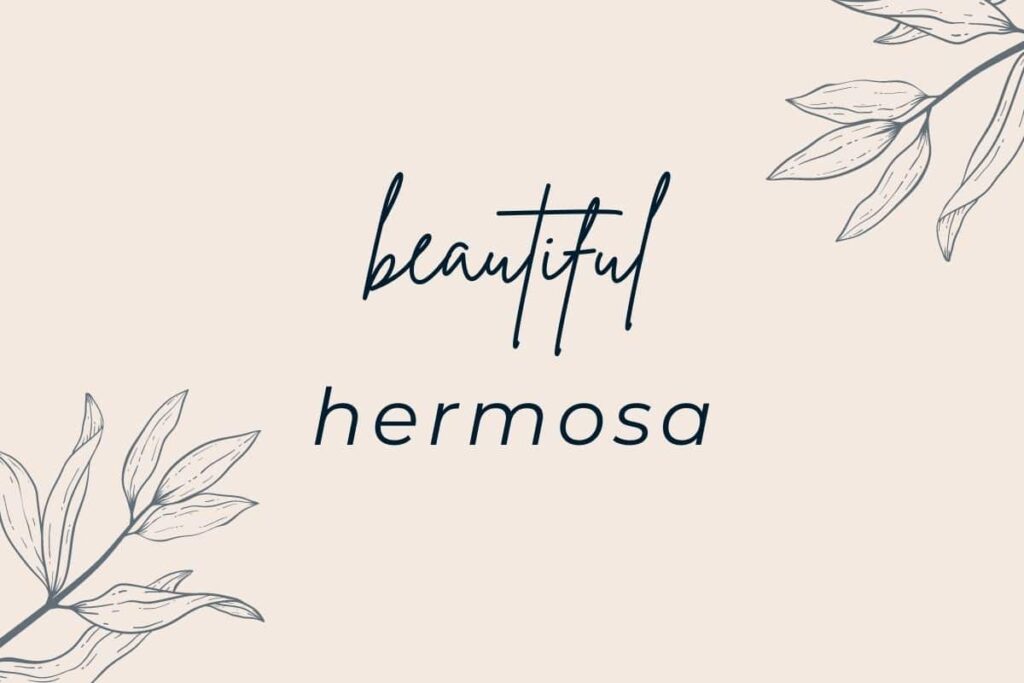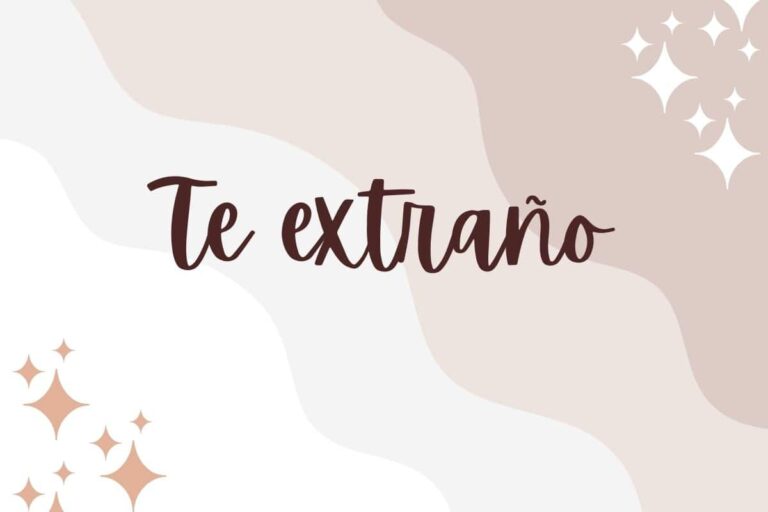How to Say Beautiful in Spanish Flawlessly – 15 Different Ways
Luckily, in this world, there are many beautiful things! There are beautiful people, there are beautiful countries, there are beautiful sunsets… and there are beautiful languages, like Spanish!
Beautiful in Spanish is hermoso and hermosa, in their masculine and feminine genders, respectively. However, it’s not the only way: there are actually several ways to say something is beautiful in Spanish! In this article, we show you 15 ways to talk about the most gorgeous places, people, objects, and situations.
Beautiful in Spanish at a Glance
All the Ways to Say Beautiful in Spanish

Hermoso/a
The most common translation for “beautiful” in Spanish is hermoso and hermosa. This word comes from the Latin formosus, which means “well formed”. Hermoso/a can be used to describe people, places, objects, and situations:
Spanish
- María tiene un bebé hermoso.
- La boda de Luis y Rosa fue hermosa.
English
- María has a beautiful baby.
- Luis and Rosa’s wedding was beautiful.
Hermosa is a nice Spanish term of endearment you can use for your loved ones.
Bello/a
Another frequent translation for “beautiful” is bello or bella, and you can use this word to talk about people, objects, and places. Although it’s perfectly understood in any Spanish-speaking country, there are some countries where its use as often, such as Argentina or Spain. It’s heard more in Spain than in Argentina, but it is only used in formal situations. On the other hand, in countries such as Venezuela it’s very common.
Note: Bello is usually placed before the noun it modifies. It’s not wrong to do it after, but it just. doesn’t sound as natural.
Spanish
- ¡Qué bello es tu perro!
- Es una bella canción.
English
- Your dog is beautiful!
- It’s a beautiful song.
Precioso/a
Precioso /a is similar to the English word “precious”, but in Spanish, it also means “gorgeous”. You can use this word to talk about people or objects that you consider really beautiful!
Spanish
- ¡Estás preciosa!
- Me compré unos pantalones preciosos.
English
- You look gorgeous!
- I bought some beautiful pants.
Lindo/a
Lindo /a is a word that has several meanings, depending on the country in which it’s said. For example, in Argentina and Uruguay, it’s the favorite way of referring to something or someone beautiful, although its connotation designates a lesser degree of beauty than hermoso/a. Its translation is close to the word “pretty”.
Spanish
- Qué linda gorra.
- Tu eres muy lindo.
English
- What a nice cap!
- You’re very handsome.
Did you notice the use of sos instead of eres? This is because in Argentina and Uruguay they use voseo: the replacement of the pronoun tú with vos and, consequently, the conjugation for “you are” is vos sos instead of tú eres.
In Mexico, on the other hand, lindo/a mean something like “sweet” or “tender”:
Spanish
Gracias por el regalo, ¡eres muy lindo!
English
Thanks for the gift, you’re so sweet!
Guapo/a
Guapo /a means “handsome”, and is a widely used word in Spain; however, in Latin America, you will not hear it very often. Guapo/a is usually used when referring to people.
Spanish
Mi novio es guapo.
English
My boyfriend is handsome.
In Spain, people also use the word guapo/a to refer to objects or situations, although, in these cases, they change the verb that accompanies the noun: from ser to estar (both mean “to be” in English).
Spanish
- Este programa de televisión está muy guapo.
- ¡La moto que te has comprado está guapísima!
English
- This TV show is great!
- The bike you bought is gorgeous!
What… guapísima? Don’t worry: we’ll learn all about superlatives at the end of the article.
Read next: I Love You in Spanish – 7 Heartfelt Ways to Express Love
Bonito/a
Bonito /a is very common in Spain, where it’s used in the same way that Argentines use lindo/a and Venezuelas use bello/a. As for the etymology of bonito, there are a pair of accepted theories: on the one hand, the Royal Spanish Academy says that it’s a diminutive of bueno (“good”), but there are also records of the Latin bonitus, which means “goodness” or “excellence”.
Divino/a
Something divino or divina is something “divine”; this is, relating to God. However, it’s also used to describe people, objects, or places with great beauty, and also lovely people. This word is a bit extravagant, and you probably won’t hear it often!
Let’s see some examples:
Spanish
- Conocí a mi cuñada y es divina.
- Me compré una cartera divina.
English
- I met my sister-in-law and she’s lovely.
- I bought a beautiful bag.
Bueno/a
Yes, surely you already know that bueno and buena means “good”. Therefore, ser bueno means “being good”. But, what would happen if we changed the verb ser for the verb estar? In that case, we would get estar bueno, which has a completely different meaning!
Estar bueno is “being hot”; to be someone of great beauty. Of course, this is an informal expression—not a phrase you would normally use in a professional conversation!
Atractivo/a
Atractivo /a, which literally means “to be attractive.” It’s a rather formal expression and is used only to refer to people.
Apuesto
An apuesta person is a “handsome” person. Similar to atractivo/a, it has a formal vibe. This word is often used when describing men: it’s a little awkward —although not wrong— to use apuesta when describing a woman.
Mono/a
Yes, we know: mono means “monkey”, and —although monkeys are adorable and we love them, it seems strange to say mono or mona when talking about someone or something beautiful. However, in Spain, it’s frequently used to mean “cute”, “nice” or “tender”.
Spanish
- Qué camisa tan mona.
- Qué mono es tu hijo.
English
- What a cute shirt!
- What a cute son you have!
Rico/a
Rico /a has several meanings in Spanish: it can be used as a translation for “delicious” and “rich”. But in Chile, it’s also common to use the word rico/a to describe a handsome person. It’s, in fact, almost a synonym for “sexy”.
Adorable
Another way to say “beautiful” in Spanish is adorable (“adorable” or “lovely”) and, just as in English, it’s used to describe someone or something that is cute or tender.
Spanish
Un gatito adorable.
English
An adorable kitty.
Bombón
In Spanish, a bombón n is a small chocolate candy, often filled with liquor. It’s also used to describe a person with great beauty. We can perfectly understand the parallel: after all, who doesn’t love chocolate?
Superlatives: Adding Emphasis to Adjectives
We have just seen 15 ways to say “beautiful” in Spanish, but let’s kick things up a notch. If what you want is to emphasize the quality of beauty, there are two ways to do this:
Adding Muy
Muy in Spanish means “very”. Adding muy to an adjective is a super simple way of making an adjective a superlative.
Spanish
- Un hombre muy lindo.
- Una camisa muy hermosa.
English
- A very handsome man.
- A very beautiful shirt.
While muy is very versatile, it doesn’t work on all the words on this post. For example, you wouldn’t use muy with precioso/a or divino/a. While there’s no grammatical rule as to why it isn’t used, it sounds unnatural to a native speaker. A possible reason for this might be because precioso and divino are already expressing a very high degree of beauty, so it is unnecessary to add a word to elevate the meaning.
Adding ísimo/a
The suffix -ísimo/a serves to raise the quality of the word that affects. For example:
Spanish
- Un tigre bellísimo.
- Una niña guapísima.
English
- A very beautiful tiger.
- A very beautiful girl.
Once again: the addition of this suffix doesn’t work with all the adjectives on the list. Words like bonitísimo or adorabilísimo, although grammatically correct, aren’t common (don’t ask us why! Not even the RAE has an explanation for it!).
Conclusion
No doubt: being able to choose from a wide range of words when speaking is beautiful! In this article, we have seen a super complete list of all the ways to say “beautiful” in Spanish, like divino, precioso and bello, and even a few regionalisms from countries like Argentina (lindo), Spain (mono), or Chile (rico). Now, we encourage you to put all that vocabulary into practice—once you do, you’ll say ¡Qué hermoso es el español!






